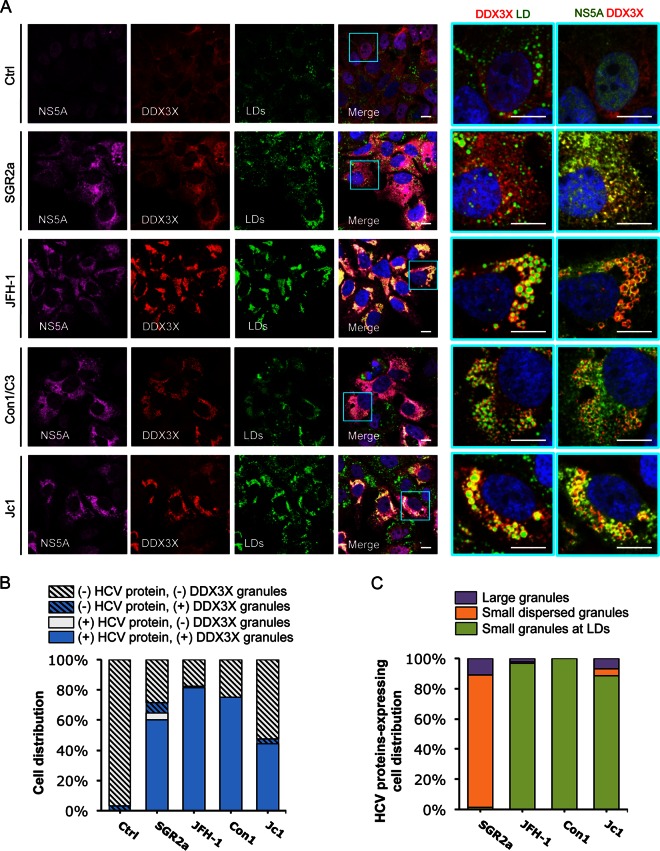FIG 6.
HCV NS5A protein colocalizes with DDX3X and LDs. Huh-7.5.1 cells were transfected with in vitro-transcribed EGFP control RNA (Ctrl), subgenomic replicon RNA of HCV genotype 2a (SGR2a), genomic-length JFH-1, Con1/C3, or Jc1 chimeric RNA for 48 h. DDX3X, HCV NS5A, and LDs were stained and characterized for their localizations and associations. (A) Confocal microscopic analyses of DDX3X, NS5A, and LD staining in cells treated with various HCV RNAs. Magnifications of selected areas are shown on the right. Colors of pictures on the far right were digitally changed for better visualization of NS5A (green instead of magenta) and DDX3X (red). Scale bars, 10 μm. (B) Quantification of cell distribution for DDX3X granules in HCV protein-negative or -positive cells. Confocal microscopic images (6 to 12 per condition from at least three independent experiments with at least 80 cells in total) were analyzed for the presence or absence of DDX3X granules in HCV protein-positive or -negative cells, as determined by detection of NS5A (A), NS3 (not shown), or core protein (not shown). Results shown are percentages of cells that are HCV protein negative and either with (blue striped bars) or without (light gray striped bars) DDX3X granules and cells that are HCV protein positive and either with (blue bars) or without (light gray bars) DDX3X granules. (C) Characterization and quantification of DDX3X-positive structures in HCV protein-positive cells. HCV protein-positive cells with DDX3X granules (blue bars from panel B) were further classified into three groups: cells with a few large DDX3X granules not associated with LDs (purple bars), cells with DDX3X granules dispersed throughout the ER (orange bars, probably representing HCV replicative intermediates), and cells with small and numerous DDX3X granules localized to LDs (green bars). Percentages of cells in each group are shown (a total of at least 40 cells).

